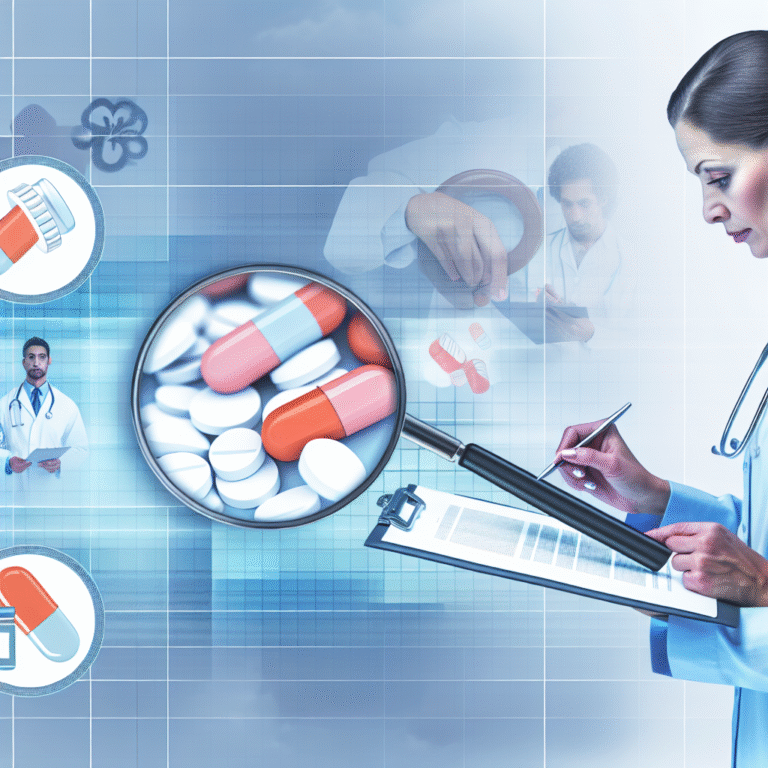The Importance of Pharmacovigilance: Keeping Patients Safe from Adverse Drug Events
The Importance of Pharmacovigilance: Keeping Patients Safe from Adverse Drug Events
Introduction
Today, new medicines and treatments are being developed quickly. While this is great, it also means we have to be extra careful about drug safety. That’s where pharmacovigilance comes in. It’s a very important part of healthcare that makes sure medicines do more good than harm. Pharmacovigilance helps prevent, find, and understand bad reactions to drugs, keeping patients safe. The main goal is to ensure that the good effects of drugs are greater than the bad ones.
Understanding Pharmacovigilance
Pharmacovigilance is the science of finding, figuring out, and stopping bad effects or other problems related to drugs. It covers everything from before a drug is approved to after it’s available in stores. The main objectives are:
1. Keeping patients safe by spotting harmful drug effects.
2. Helping doctors make better decisions about treatments.
3. Stopping harmful effects from dangerous drugs.
Common Types of Bad Drug Events
Knowing the different types of bad drug events is important for healthcare workers. The most common ones are:
1. Allergic reactions: Unwanted immune responses to medicines.
2. Overdoses: Taking more than what is recommended.
3. Drug interactions: When one drug affects how another drug works.
4. Drug-food interactions: When certain foods affect how a drug works.
5. Side effects from wrong diagnosis: Getting the wrong medicine because of a wrong diagnosis.
6. Contaminants from manufacturing: Harmful stuff getting into the medicine during making.
7. Labeling errors: Wrong or tricky labels on medicine packages.
8. Not following prescriptions: Patients not taking their medicines as directed.
9. Misunderstandings: Patients not understanding what their doctor said about their medicine.
10. Off-label use problems: Using medicine for something it’s not approved for.
The Role of Healthcare Providers
Doctors, nurses, and pharmacists are the first to keep us safe by spotting and managing bad drug effects. They also teach patients about possible side effects. They report bad effects to the authorities and make sure they are documented properly.
Regulatory Framework and Organizations
Some organizations around the world help oversee drug safety. The big ones include:
– World Health Organization (WHO): Gives global guidance and helps everyone work together.
– U.S. Food and Drug Administration (FDA): Leads drug safety in the U.S.
– European Medicines Agency (EMA): Looks after drugs in Europe.
These organizations make sure everyone knows the rules and keeps medicines safe.
Tools and Technologies in Pharmacovigilance
Technology makes pharmacovigilance better. Useful tools and technologies are:
– Databases and software for keeping track of bad effects.
– AI and machine learning to guess harmful effects before they happen.
– Electronic health records to track patient-drug interactions.
These advancements help doctors stay ahead of risks linked to medicines.
Challenges in Pharmacovigilance
Even though it’s important, pharmacovigilance has some challenges:
1. Not enough reporting: Not everyone reports bad effects, messing up data about drug safety.
2. Different healthcare systems: Different countries have different healthcare systems and ways of reporting.
3. Too much information: Huge amounts of data can be hard to manage.
Case Studies
Looking at past events shows why pharmacovigilance is so important. Some big examples are:
– The Thalidomide disaster, where bad effects in newborns were caught in time.
– Withdrawing Vioxx because of heart risks.
– Catching heart rhythm problems caused by some allergy medicines.
These stories teach us to be careful and learn from past mistakes.
Improving Pharmacovigilance
To keep patients safe, we must keep making pharmacovigilance better. Strategies include:
– Teaching doctors continuously so they are always informed.
– Getting patients and the public involved by explaining drug safety.
– Encouraging new ideas in pharmacovigilance through research.
Conclusion
Pharmacovigilance is really important for keeping everyone healthy. It needs people from all over the world to work together. Healthcare providers, patients, and authorities must all help to keep drugs safe and reduce bad events.
Call to Action
We encourage everyone to get involved:
– Tell your doctor if you have any bad reactions to drugs.
– Be part of drug safety campaigns to spread awareness.
– Get involved in pharmacovigilance projects where you can.
Together, we can make healthcare safer and more effective.






